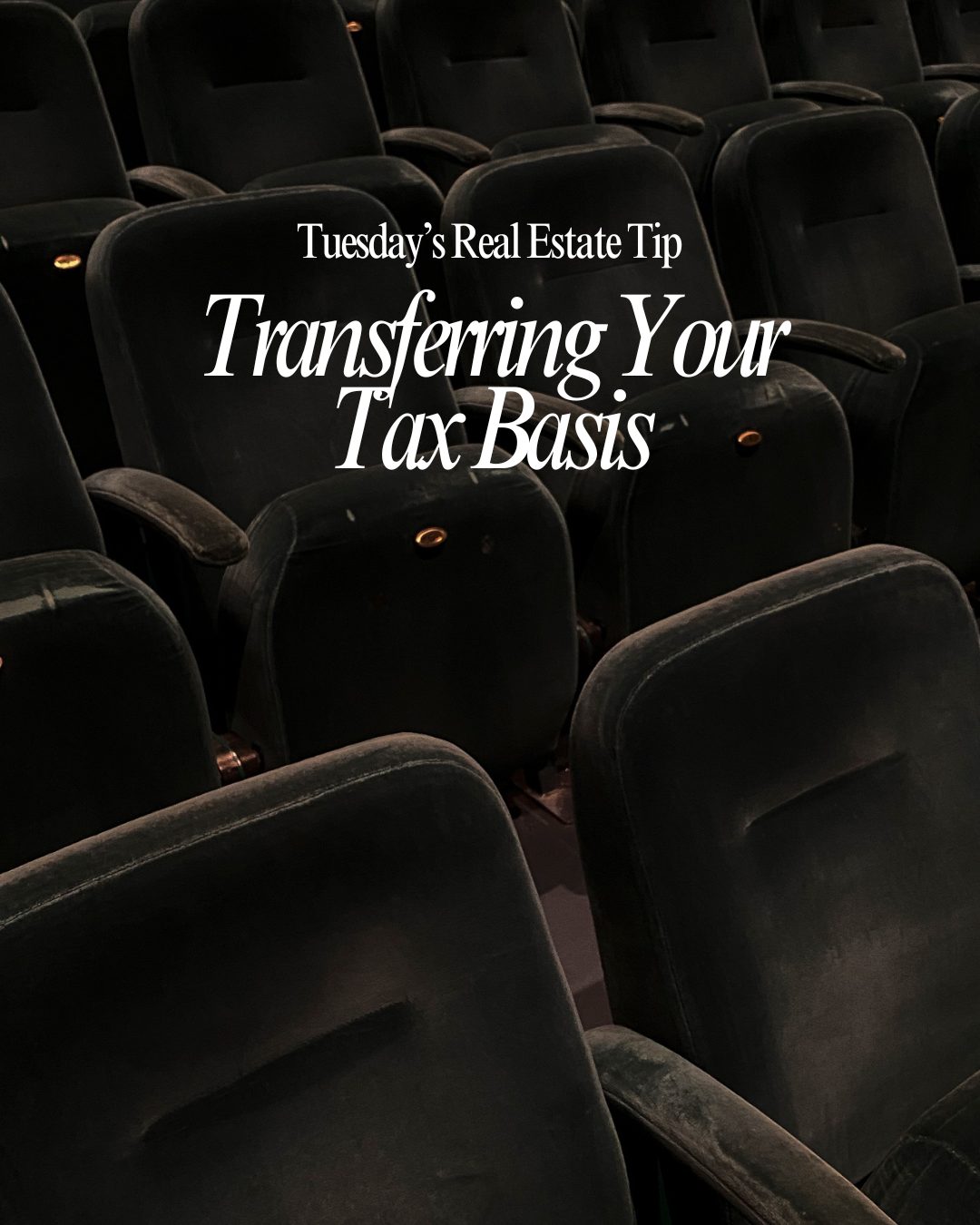Transferring Your Tax Basis

Transferring Your Tax Basis in California: What You Need to Know
If you’re a homeowner in California, you may be able to transfer your property tax basis to a new home, thanks to Proposition 19. This can result in significant tax savings, especially if you’ve owned your home for many years and have a lower assessed value.
Understanding Proposition 19
Proposition 19, which took effect in April 2021, allows eligible homeowners to transfer their property tax basis to a new home under certain conditions. This means that if you qualify, you won’t have to pay property taxes based on the current market value of your new home but instead retain the lower tax basis from your previous residence.
Who Qualifies?
To transfer your tax basis, you must meet one of the following criteria:
- Be 55 years or older
- Be severely disabled
- Be a victim of a natural disaster or wildfire
Key Benefits of Proposition 19
- Transfer to Any County in California: Unlike previous laws that limited transfers to select counties, Proposition 19 allows transfers anywhere in the state.
- Up to Three Transfers: Homeowners 55+ or disabled can transfer their tax basis up to three times in their lifetime.
- Move to a More Expensive Home: If your new home costs more than your original one, you can still transfer your tax basis, but the difference in value will be added to your new assessment.
How to Apply
- Purchase or identify your new home within two years of selling your previous home.
- Complete the required forms with your county assessor’s office.
- Submit documentation proving your eligibility (e.g., age verification, disability status, or proof of loss due to a disaster).
- Await confirmation from the county assessor regarding your adjusted tax basis.
Maximizing Your Savings
For those looking to downsize or relocate within California, Proposition 19 provides an excellent opportunity to maintain lower property taxes while moving into a new home that better suits your needs.
If you’re considering a move and want to explore how transferring your tax basis can benefit you, reach out to our team at the DiMaggio Betta Group. We’re here to help guide you through every step of the process!
For personalized real estate advice, contact us today at www.dimaggiobettagroup.co!
Here are a few helpful links:
From Long Island to Montclair: Crafting a Vibrant New Chapter in Retirement




Building Resilience: Essential Mitigation Strategies for Homeowners Against Natural Disasters

Homeowners can adopt a variety of effective mitigation strategies to reduce the risks associated with natural disasters and improve the resilience of their properties. Let’s prepare ahead so we can mitigate losses as much as possible.

Here are some key strategies to consider:
1. Flood Mitigation: Elevate the Home:
If you live in a flood-prone area, consider elevating your home above the base flood elevation. This can involve raising the foundation or using flood vents.
-Install Flood Barriers: Use flood walls, levees, or berms to protect your property from rising water.
-Sump Pumps: Install sump pumps with battery backup systems to remove water from basements or crawl spaces during heavy rains.
2. Wind and Storm Resistance: Reinforce Roofs:
-Use hurricane straps to secure the roof to the walls, and consider impact-resistant roofing materials that can withstand high winds.
-Impact-Resistant Windows and Doors: Install storm shutters or impact-resistant glass to protect windows and doors from flying debris.
-Secure Outdoor Items: Bring in or secure outdoor furniture, grills, and other items that could become projectiles during storms
3. Fire Prevention: Create Defensible Space:
-Clear vegetation and debris within a designated distance from your home to reduce fire risk. Maintain a buffer of at least 30 feet with minimal flammable materials.
-Fire-Resistant Landscaping: Use fire-resistant plants and materials in landscaping to minimize the risk of fire spreading to your home.
-Install Firebreaks: Create firebreaks by removing combustible materials and using gravel or other non-flammable materials in landscaping.
4. Seismic Preparedness:
-Secure Heavy Items: Secure heavy furniture, appliances, and other items to walls to prevent them from tipping over during an earthquake.
-Foundation Reinforcement: Retrofit your home’s foundation to better withstand seismic activity. This may include bolting the house to its foundation and reinforcing walls.
-Install Flexible Utilities: Use flexible connections for gas lines and plumbing to reduce the risk of leaks during an earthquake.
5. Energy Efficiency and Sustainability:
-Energy-Efficient Upgrades: Invest in energy-efficient appliances, insulation, and windows to reduce energy consumption and enhance comfort during extreme weather.
-Install Solar Panels: Consider solar energy systems to decrease reliance on the grid, especially during power outages caused by natural disasters.
-Rainwater Harvesting: Implement rainwater harvesting systems to collect and store rainwater for irrigation or other uses, reducing dependence on municipal water supplies.
6. Emergency Preparedness:
Create an Emergency Kit: Prepare a disaster supply kit with essential items such as food, water, medications, flashlights, and first aid supplies.
-Develop an Evacuation Plan: Plan escape routes and designate meeting places for family members to ensure everyone knows what to do in case of an emergency.
-Stay Informed: Sign up for local alerts and notifications regarding severe weather or other emergencies to stay informed and prepared.
7. Insurance Considerations:
Review and Update Insurance Policies: Ensure you have adequate coverage for natural disasters relevant to your area, such as flood or earthquake insurance. Regularly review your policies to adapt to changes in your property or risks. Check with your insurance provider for potential discounts on premiums for implementing certain mitigation measures.
By implementing these mitigation strategies, homeowners can significantly reduce the risks posed by natural disasters and enhance the resilience of their properties. Taking proactive steps not only protects your home but also contributes to the safety and well-being of your family and community. Piedmont offers a program to help neighborhoods prepare for natural disasters and emergencies. If you’re interested in getting started, feel free to reach out—I’d be happy to guide you through the process.
Contact the DiMaggio Betta Group if you are in need of an insurance quote.
or Call 510.414.6777 | Debbi DiMaggio, Always Happy To Take Your Call and Help Guide You Through Whatever It Is You May Need.
East Bay Parks and Rec

A List of A Few Parks and Recreation for You To Enjoy. Ask us about others around the Bay Area, as there are many to choose from.
Mt Diablo
Sibley
Lafayette Resevoir
MacDonald Trail, Parkridge Trailhead
Oakland Hills Swim and Tennis Club
Piedmont Stables, 6525 Redwood Rd
Woodminster Summer Musicals
Chabot Space & Science Center
Roberts Regional Recreation AreaJoaquin Miller Park
Huckleberry Botanic Regional Preserve
Reinhardt Redwood Regional Park
Piedmont Park
Piedmont Rec Center
Piedmont Center for the Arts
For a tour of our vibrant neighborhoods in the East Bay, reach out to Debbi DiMaggio or Adam Betta.

Season of Giving
Don’t miss out … Season of Giving with Corcoran Icon Properties in Piedmont.

Move your feet, before you eat at the Piedmont Turkey Trot.
Breakfast with Santa, December 7th from 10:30-12:30PM
Bring an unwrapped toy to support the Piedmont Fire Department, Toys for Tots Drive
And, or Virtual Food Drive and Build Day with Give Back Homes.
Let us know how the DiMaggio Betta Group can make your season bright. We are helping our clients and friends donate what they do not need any longer. Please reach out and we will pick up your donations. 510.414.6777 Debbi.DiMaggio@corcoranicon.com
Harvesting Fresh Spaces: A Fall Cleaning Guide

Harvesting Fresh Spaces: A Fall Cleaning Guide. Ready to transform your home this season? Here are some quick tips for your seasonal cleaning.
 Facebook
Facebook
 X
X
 Pinterest
Pinterest
 Copy Link
Copy Link











